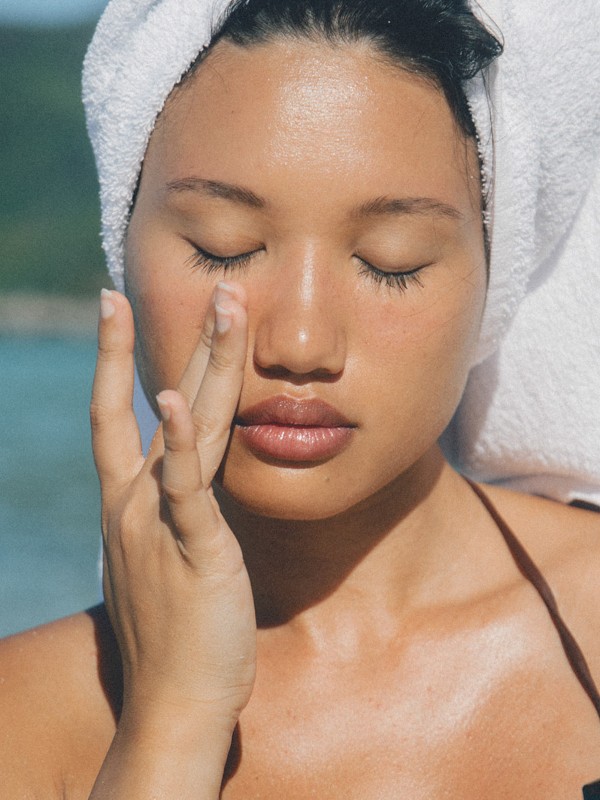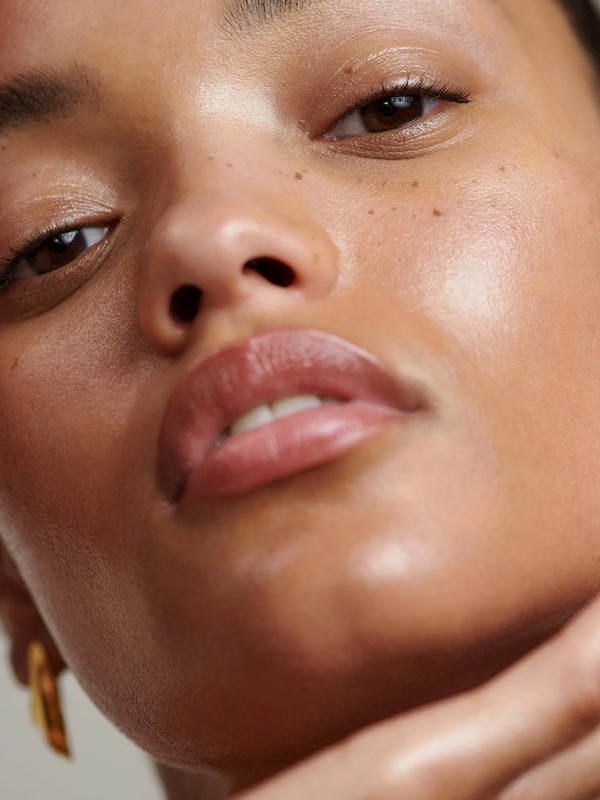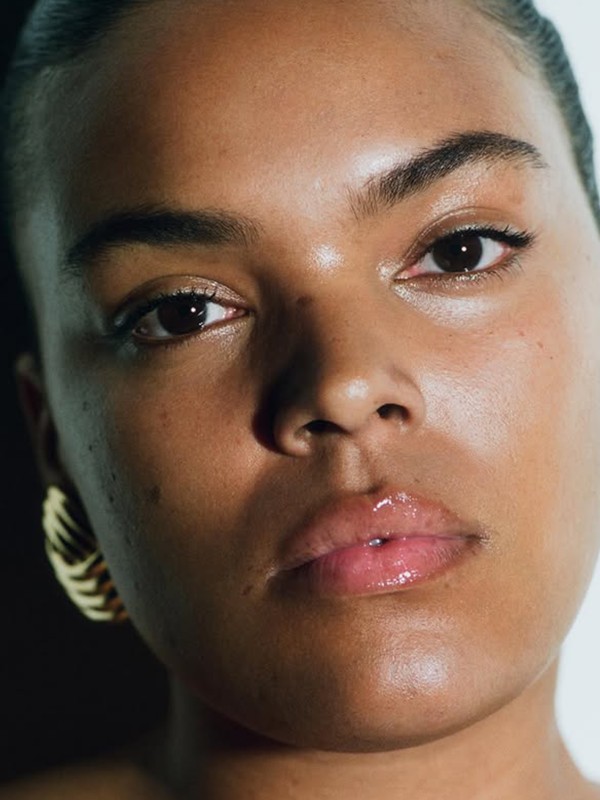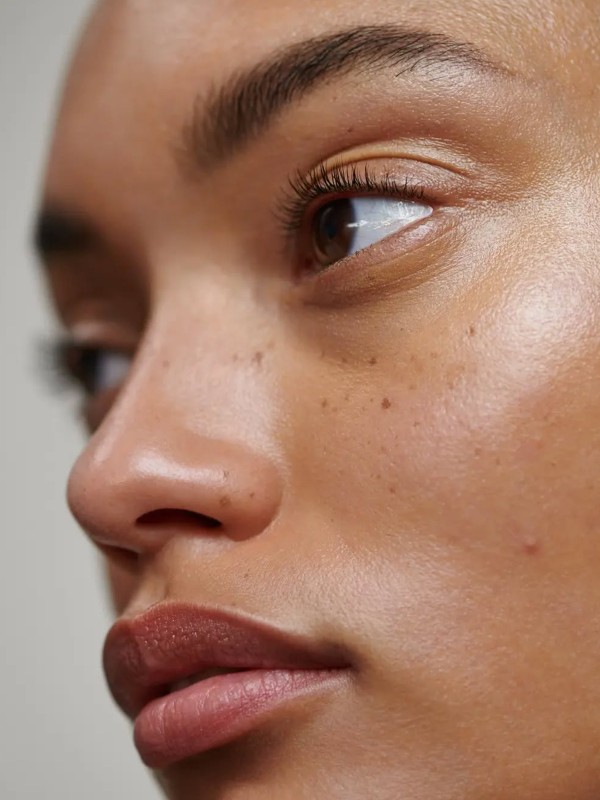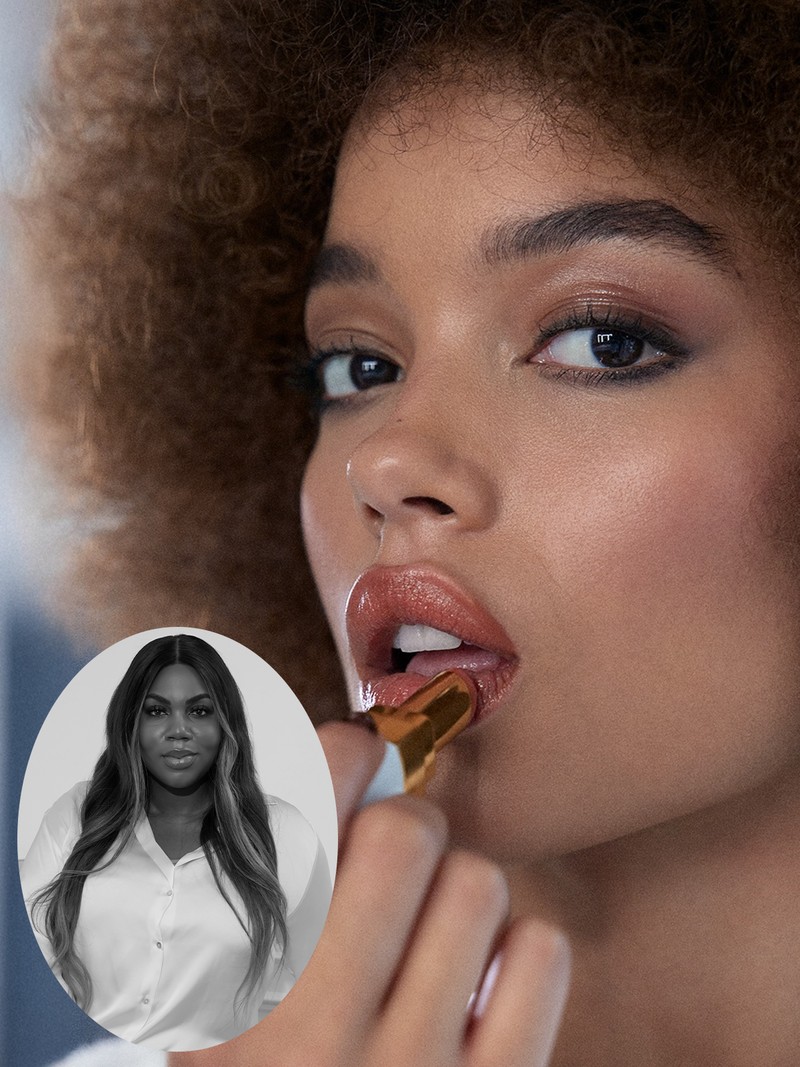
Adeola Debunks The Most Common Make-Up Myths
MYTH: You Don’t Need Extra SPF If It’s In Your Foundation
TRUTH: This one comes up a lot. While it’s great that so many foundations and complexion products now include SPF, it’s not enough on its own. You should always apply a separate sunscreen as the last step in your skincare routine before make-up. Why? Because most of us don’t apply nearly enough foundation to get the level of protection listed on the label. To properly protect your face, you need around two to three full finger lengths of SPF and, let’s be honest, no one’s applying that much foundation. So, while having added SPF in your foundation is a bonus, it’s not a substitute. Think of it as a nice little extra layer, not your main defence.
MYTH: Colour Match Foundation To Your Hand
TRUTH: As a make-up artist, I see people make this mistake all the time and it can be a costly one. It might seem convenient to test foundation on the back of your hand, but you’re not wearing your foundation there. You’re wearing it on your face and that’s exactly where you should be testing it.
I always recommend swatching your foundation on multiple areas of your face to get the most accurate match. A lot of people go straight to the jawline, but that can be misleading since it’s usually the most neutral and least affected by things like redness, texture or sun exposure. Instead, try applying it on your forehead, since that’s typically the darkest part of the face due to direct sun, and across your cheeks down to your jawline, where there’s often more colour and redness. If your neck and chest are a noticeably different shade to your face, it’s a good idea to test your foundation there too. Once you've swatched, take a mirror and step into natural daylight – that’s the best way to see how well the shade blends with your skin overall.
MYTH: Primers Aren’t Essential If You Moisturise
TRUTH: Now, this is one beauty myth I sometimes agree with. A separate primer isn’t always necessary. Often, just prepping your skin properly can be all you need to create a smooth base for make-up.
That said, the key is understanding your skin and what you’re trying to achieve. For example, if you have oily skin and want to control shine or blur the appearance of pores, then an oil-controlling or mattifying primer can be a great addition. I usually suggest applying it just to the T-zone where oil tends to build up. If your skin is on the drier side, you might benefit from a hydrating primer that smooths and plumps the skin to reduce the look of texture and dryness under make-up.
So, yes, sometimes your moisturiser alone can do the job, especially if it’s giving your skin the hydration and smoothness it needs. But if you have specific concerns or want to extend your make-up’s longevity or finish, a targeted primer can really be of benefit.
MYTH: Concealer Must Be Lighter Than Foundation
TRUTH: This one really depends on where you're applying your concealer. If you're using it to brighten areas like the under-eyes, then yes, a concealer that’s a little lighter than your skin tone can work beautifully. I’d recommend going no more than two to three shades lighter to keep it looking natural, especially through the centre of the face.
Where that rule doesn’t apply is in covering blemishes. If you use a lighter concealer on a spot, you're not hiding it, you’re highlighting it. For any areas you’re trying to conceal, like breakouts or redness, it’s best to use a concealer that matches your skin tone exactly. That way, the product blends seamlessly into your foundation and does its job without drawing attention.
MYTH: You Don’t Need To Clean Your Brushes Daily
TRUTH: If you’re noticing frequent breakouts, even after investing in all the right skincare, it might be time to take a closer look at your make-up brushes. When was the last time you gave them a proper clean? While cleaning your brushes daily isn’t always realistic, there are ways to make it easier, so you do it more frequently.
For day-to-day use, I love a good spot cleaner like the Cinema Secrets Brush Cleanser. It’s an absolute staple in my kit and a backstage essential at Fashion Week, especially when there’s no access to water and we need to clean brushes quickly between models. It’s quick-drying, antibacterial and gets the job done. I always recommend doing a proper deep clean at least once a week. A brush cleansing shampoo or solid brush soap works best – By Joy Adenuga makes amazing brush soaps that not only clean thoroughly but also smell incredible.
MYTH: Make-Up Has An Expiry Date, But It’s Just A Guideline
TRUTH: We’ve all held onto that one discontinued lipstick we can’t bear to part with, or that eyeshadow palette with just one shade we’re completely obsessed with. But the truth is, make-up does expire, and ignoring those expiration dates can cause more harm than you think.
Most people don’t realise that nearly all beauty products come with a little symbol on the back or bottom – it looks like an open jar, and it usually says something like 6M, 12M or 18M. That tells you how many months the product is good for after it’s been opened. It’s there for a reason. Using products past their prime can lead to irritation, breakouts or even infections, especially with products used around the eyes. Keep in mind that cream or liquid-based products tend to expire faster than powders, so your foundations, concealers, cream blushes and especially mascaras should be replaced more regularly.
MYTH: Expensive Make-Up Is Better Quality
TRUTH: There’s never been more choice when it comes to beauty, and the great news is that expensive doesn’t always mean better. Some of my absolute favourite products are from more affordable brands, and they easily outperform their high-end counterparts. That’s because so many brands, regardless of price point, are investing heavily in formulas and high-quality ingredients.
When shopping for make-up, it’s all about doing your research and buying something based on performance, not just the label or the luxe packaging. A lot of those big price tags come down to marketing, branding and fancy packaging, so often you're paying more for what’s around the product than what’s actually in it.
That said, there are categories where investing a bit more can be worth it, like foundation, skincare-infused products, or tools you use every day. But for things like mascara, lip gloss or eyeliner? There are some amazing high-street options that hold their own against luxury brands.
MYTH: Setting Spray Is Just Bottled Water
TRUTH: This one’s a common misconception. Just like with primers, it really comes down to choosing the right product for your needs. Setting sprays are definitely not just water in a bottle. Many are formulated with specific ingredients that help lock in your make-up, control oil, boost hydration or enhance the finish of your overall look.
As a side note, it’s also important to understand the difference between a setting spray and a fixing spray because they serve different purposes. A setting spray is designed to help blend and melt your make-up together, giving your skin a more seamless, natural-looking finish. It softens any harsh edges, reduces that powdery appearance and helps everything sit more beautifully on the skin. These tend to be more hydrating, which makes them ideal for normal to dry skin types.
A fixing spray, on the other hand, is all about longevity. It works to lock your make-up in place and keep it there throughout the day. These formulas often contain ingredients like polymers or alcohol that help your make-up hold up in heat, humidity or long-wear situations – perfect if you have oily skin or need your look to last.
MYTH: Oily Skin Doesn’t Need As Much Moisture
TRUTH: This is a myth I come across all the time. So many people with oily skin either skip moisturiser completely or use harsh products that strip their skin to control the shine, without realising that this actually makes things worse. When you strip the skin of its natural oils, it panics and starts producing even more oil to compensate, creating a constant cycle of excess shine and imbalance.
The truth is that oily skin still needs hydration. Our skin can't produce water on its own, so when it's dehydrated, it tries to make up for it by overproducing oil. The key is finding the right type of moisturiser – something that hydrates without adding unnecessary grease. Water-based products that contain ingredients like hyaluronic acid are ideal, as they help the skin retain moisture without clogging pores or feeling heavy. And of course, try to avoid oil-based formulas that can overload the skin. Oily skin can often be dehydrated skin, and make-up always sits better on a well-hydrated base. So instead of stripping, focus on balancing and nourishing your skin.
MYTH: Red Lipstick Doesn’t Suit Everyone
TRUTH: Everyone can wear red lipstick – it’s just about finding the right red for your skin tone and what feels good for you. The idea that red is only for certain people is such a myth, and I’m here to tell you there’s a red out there for you.
Start by considering your undertone. If you have cool undertones, opt for blue-based reds as they tend to complement your complexion and have the added bonus of making your teeth look whiter. If you’re more warm-toned, orange-based or brick reds are usually super flattering. And for those with neutral undertones, you’ve got flexibility, you can play with both and see what feels best.
I understand that red lipstick can feel a little daunting, especially if you’re not used to wearing bold colours. A matte red is going to give you a strong, statement look, which is amazing if that’s your vibe, but if you want something softer or more wearable for every day, try a sheer or glossy red instead. It gives you that pop of colour without feeling too overpowering.
Follow @ADEOLAGBOYEGA
DISCLAIMER: We endeavour to always credit the correct original source of every image we use. If you think a credit may be incorrect, please contact us at info@sheerluxe.com.
